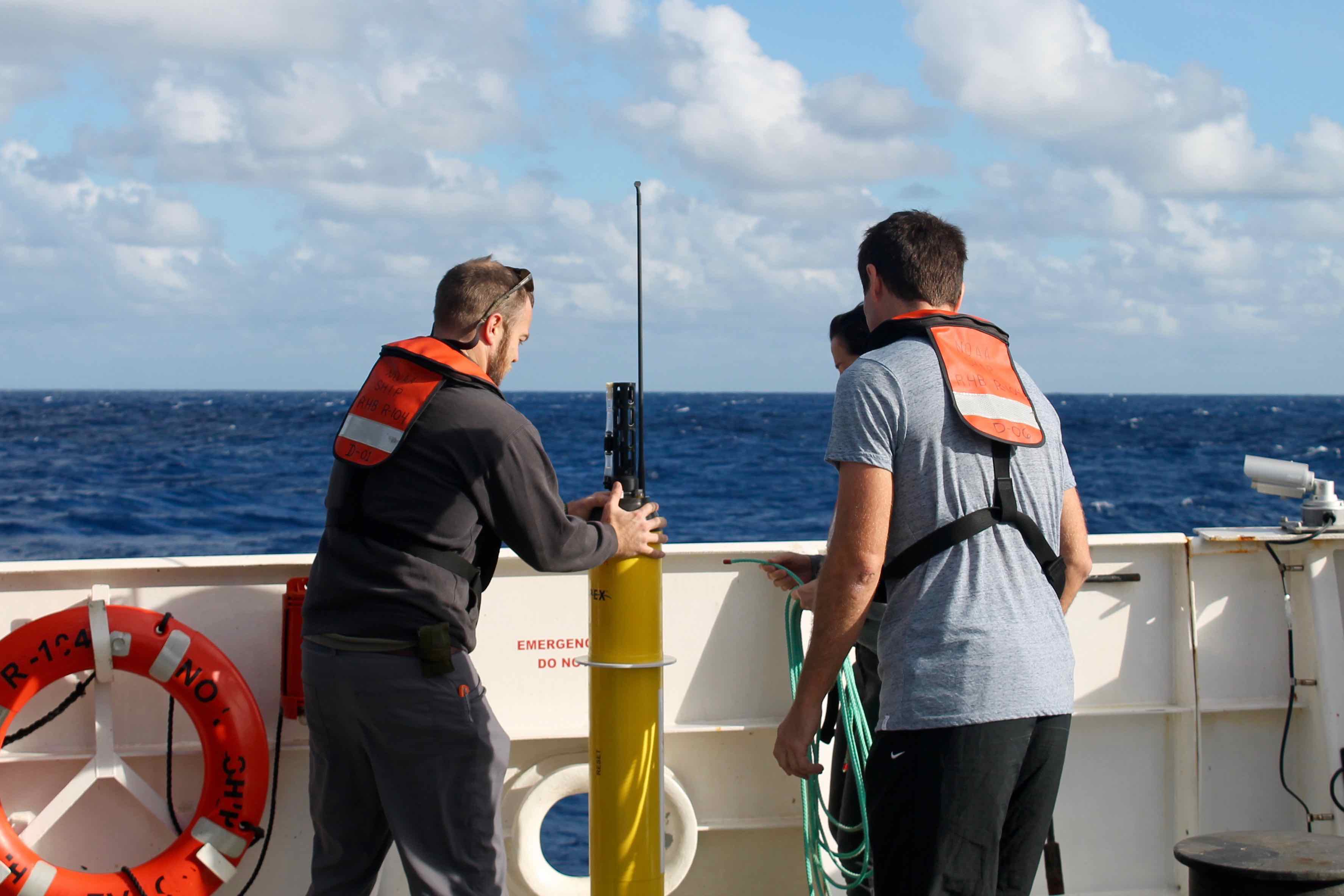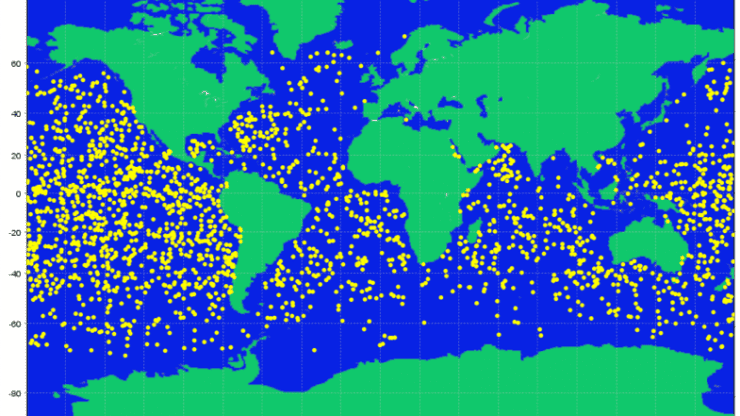Staff with the US Argo Data Acquisition Center (DAC) at AOML marked an important milestone this past February by processing the one millionth profile from Argo floats. The DAC team has been processing and quality controlling all of the raw data obtained from US-deployed Argo floats since 2001, with about 90,000 temperature-salinity profiles processed annually since 2007. These profiles have provided the global scientific community with an unprecedented record of the evolving state of the upper ocean, advancing understanding of the ocean’s role in world climate.
The United States is the largest partner in the international Argo program, begun in 1999 to build a near real-time, high-resolution, quality-controlled climate monitoring system for the upper and middle layers of the global ocean. As such, the AOML DAC receives and processes data from about 2,000, or more than half, of the approximate 4,000 floats that currently make up the global Argo array.
The data undergo rigorous quality control standards and are transmitted within 24 hours of the time of observation to the Global Telecommunications System for use worldwide in weather forecasts and research studies, as well as for assimilation into ocean forecast models and other purposes.
Argo floats are deployed in the ocean by ships and aircraft. In a typical mission, they descend through the water column and drift with ocean currents at a depth of about 1,000 m. Every 10 days the floats descend to their profiling depth (typically about 2,000 m, with the exception of deep Argo floats that can profile all the way to the ocean bottom in most regions) and then gather data as they rise through the water column. Upon reaching the ocean surface, these data are relayed via satellite to land-based receiving stations where they are processed, quality controlled, and made freely available to the scientific community in a matter of hours.
The Argo network of profiling floats reached its initial target goal of 3,000 floats deployed worldwide in all ice-free ocean regions in 2007. Since then, the floats have provided the scientific community with a consistent and methodical means for measuring the physical state of the upper ocean globally. Argo data now appear annually in more than 200 research papers, a testament to the program’s success and the extent to which the data have transformed understanding of the ocean’s role in both weather and climate variability.
Argo has enabled comprehensive studies of the mean state of the ocean, as well as the ocean’s seasonal cycle, interannual ocean-atmosphere interactions, and long-term trends in terms of circulation, heat content, and salinity. In an expansion of Argo, with a subset of the floats equipped with biogeochemical sensors to measure additional parameters such as oxygen, pH, and nitrate, the importance of Argo data for fisheries and ecosystem research is expected to significantly increase.
Author: Gail Derr

